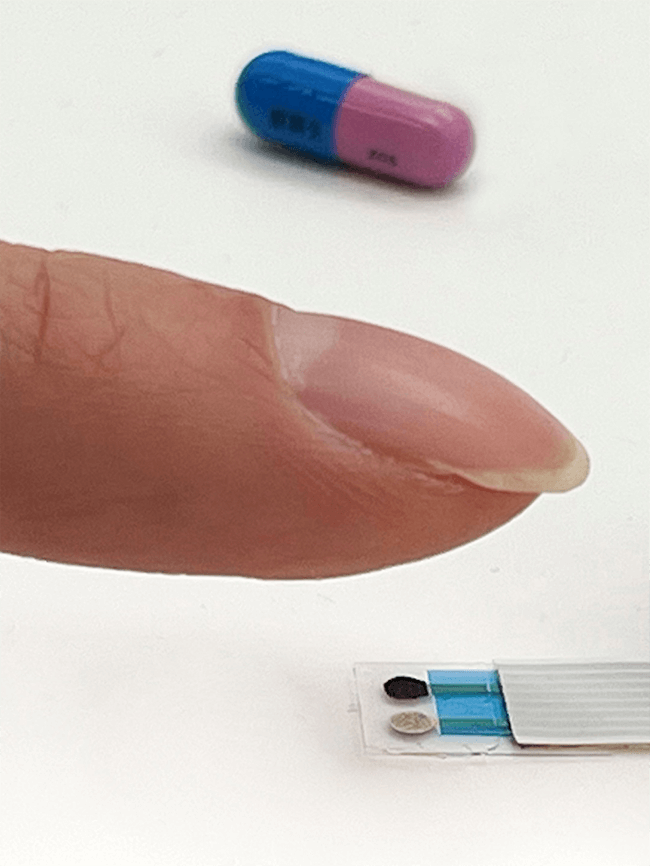Touch Sensor Developed That Helps Patients Control Medication
| 02-09-2022 | By Robin Mitchell
Recognising the challenges patients face when taking lithium, researchers recently demonstrated a touch sensor that can determine the levels of lithium in the blood without using invasive measures. What challenges does lithium present, what did the researchers develop, and how could such touch sensors help with patient care?
What challenges does lithium present?
Lithium has been proven to be an effective mood stabiliser for those suffering from serious mental conditions such as bipolar disorder and depression. However, getting the lithium dosage can be challenging as too little will have little effect, and too much can introduce dangerous side effects, including headaches, nausea, and tremors. As such, doctors prescribing lithium need to take numerous blood tests to ensure that the dosage level is sufficient.
At the same time, lithium also introduces another side-effect that occurs with the correct dosage; failure to dose. Simply put, those on anti-depressants and mood stabilisers often forget (or refuse) to continue taking the medication as they feel better. Such medicines are only effective when taken over long periods, and it is essential that they continue to be taken.
Therefore, doctors also need to monitor lithium levels in patients over time to ensure that the medicine is being taken correctly. This also causes challenges because patients that miss pills or take them inconsistently can be difficult to diagnose and treat.
Researchers develop touch sensor able to determine lithium levels
Recognising the challenges patients and doctors face when prescribing lithium, researchers have developed a new touch sensor that can be used to determine lithium levels non-invasively.
To create the sensor, the researchers chose to look for traces of lithium in human sweat, but doing so presents several challenges. Firstly, detecting trace amounts of lithium in sweat is complicated when considering the low concentration. The second challenge faced is that detecting ions in a solution often requires a liquid environment, and sweat doesn't provide nearly enough liquid to act as an electrolytic solution.
In order to solve these challenges, the researchers developed a water-based gel incorporating glycerol. The use of glycerol prevents the sensor from drying out and thus can maintain its electrolytic properties. Detecting the lithium ions in the gel was done using an ion-sensitive electrode. In the presence of ions, the electrodes create a different electric potential that can be used to infer lithium concentration in the bloodstream.
The resulting sensor is a small square patch that can detect the lithium level after just 30 seconds. Even though the sensor is still in the developmental stages, it presents a serious opportunity for those treating patients with serious mental disorders. Taking the project further, the researchers hope to be able to use the sensor to detect trace amounts of other compounds, including alcohol and painkillers, that could help identify what medicines people have consumed and at what concentrations.

How can touch sensors help with patient care?
The development of non-invasive sensors to identify traces of medicinal compounds presents doctors with serious advantages that go far beyond the care of those taking lithium.
Firstly, there are very few (if any) medical procedures that are pleasant, and this can make the experience of medical care frightening. In fact, such experiences can be so traumatic for some that medical examinations will often be avoided, which can see the development of serious conditions.
Secondly, invasive medical procedures require an element of trust, and this can be extremely difficult to build, especially with those who have severe trust issues (this is also problematic for those who have extreme paranoia and can become violent). As such, the use of a simple touchpad that only requires minimal contact and no pain could be highly beneficial for diagnosis.
Thirdly, non-invasive sensors can be used to take many measurements without causing injury. While blood tests do provide accurate readings, they cannot be taken frequently, and their expensive testing methods also reduce the practicalities of frequent tests.
Overall, non-invasive sensors can provide doctors with the ability to take frequent measurements without causing distress to patients. At the same time, patients will be less likely to avoid tests, and this can help to ensure that the well-being of patients is assured.

